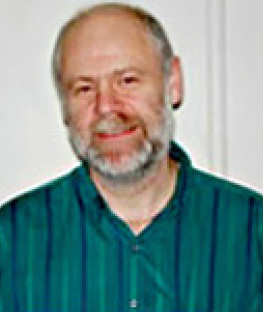Radiation has been well studied since the discovery X rays in November 1895 (
1). Its effects on the human body were seen soon after in the form of X-ray dermatitis that was observed in the USA (
2). Becquerel’s (
3) identification of radioactivity, and the subsequent discovery of radium (
4), led to other cases of radiation damage as some of the radioactive materials were now being deposited internally. For example, it is well known that the radium dial painters employed before 1930 suffered large internal contaminations from ingesting radium when painting dials with radium paint (
5) due to the unfortunate habit of licking the paint brush to obtain a fine point. The resulting body burdens were large and often resulted in bone cancers, some fatal.
It was quickly recognised that some protection measures needed to be developed and one year after the discovery of X rays, Fuchs (
6) provided the first radiation protection advice. Since that time we have been refining our knowledge and understanding of the effects of radiation on the human body. Today, the International Commission on Radiological Protection (ICRP) is the acknowledged leader in providing advice on the calculation of doses to a human from the exposure of ionising radiation whether the source be external, or internal, to the body. To this end, a great number of advisory publications have been issued since the formation of the ICRP in 1950. Some examples of the work of the ICRP can be found elsewhere (
7). While the number of documents issued has, at time of writing, reached 112 documents, some of these have replaced earlier documents based on new knowledge that has been discovered by researchers working to improve our understanding of this subject.
The ICRP documents cover a wide range of subjects dealing with many different aspects of radiation protection. Focussing on internal radiation, the guidance provides advice on such things as models for calculating how radioactive materials move though the body and how the energy of radioactive decay can be transformed into a dose, which ultimately is related to a health risk. For most doses today that occupationally exposed workers receive, the health effect is an increased risk in cancer. The popularised “radiation sickness” syndrome does not occur until very high doses are reached.
Radioactive materials that are aerosolised can be inhaled and, depending on such things as solubility, particle size, chemical form, radioactive decay, will irradiate the lung as long as they remain there. To better understand the risk of forming a lung cancer that arose from materials deposited in the lung following such an inhalation one needs to know where this material goes and what cells were irradiated. Currently, the second leading cause of lung cancer (smoking being the first) is the inhalation of Radon gas (
8). Radon has many radioactive isotopes but the predominant isotope, which is naturally occurring, has a mass of 222 and a half-life of 3.8 days. It decays in the lung by alpha particle emission (
9), which is a heavy charged
particle that can travel only a few microns in tissue. The
emission can cause double strand breaks in DNA contained in
cell nuclei as the alpha particle deposits all its energy over that
small distance. The decay products of radon are also themselves
radioactive and will irradiate any tissue to which they adhere.
One paper in this issue of the journal (radioactivity and lung cancer – mathematical models of radionuclide deposition in the human lungs) attempts to further our knowledge about lung dosimetry by improving our understanding of where the inhaled radioactive materials are deposited in the lung (
10). The approach is a theoretical study of how aerosols are deposited in the airways of the lung used two approaches. The first, using a stochastic lung geometry and a particle transport-deposition model being based on a random-walk algorithm, and the second, used a polydisperse carrier aerosol composed of irregularly shaped particles. Additionally, the effect of breathing characteristics (e.g., mouth breathing versus nose breathing) was considered and how those effects are carried through to the radiation doses to bronchial/alveolar tissues.
The results showed that the distribution of radiation dose depends upon the size of the carrier aerosol. For example, particles less that 10 nm and larger than > 2 μm aerosols are preferentially deposited in the extrathoracic and upper bronchial region, whereas aerosols with intermediate sizes penetrate to deeper lung regions, potentially causing more damage to the alveolar tissue.
Theoretical studies are only as good as the models that are used to predict results from a given scenario and for models to gain acceptance, and be of general usefulness, the predictions must be validated by experimental data. This paper does this, in part, and has some impressive correlations with experimental data for some simulations – but not all. As with any theoretical study, when one part of the study is found to agree with real data a “leap of faith” can be made that the method is valid and all theoretical predictions would be good and would agree with experimental data if it could be obtained. Unfortunately, there is no easy answer to this conundrum, and it remains a “leap of faith”.
In these situations, the theory will have to stand until data can be obtained to either fully substantiate the findings, or to show that there are areas that need improvement.



